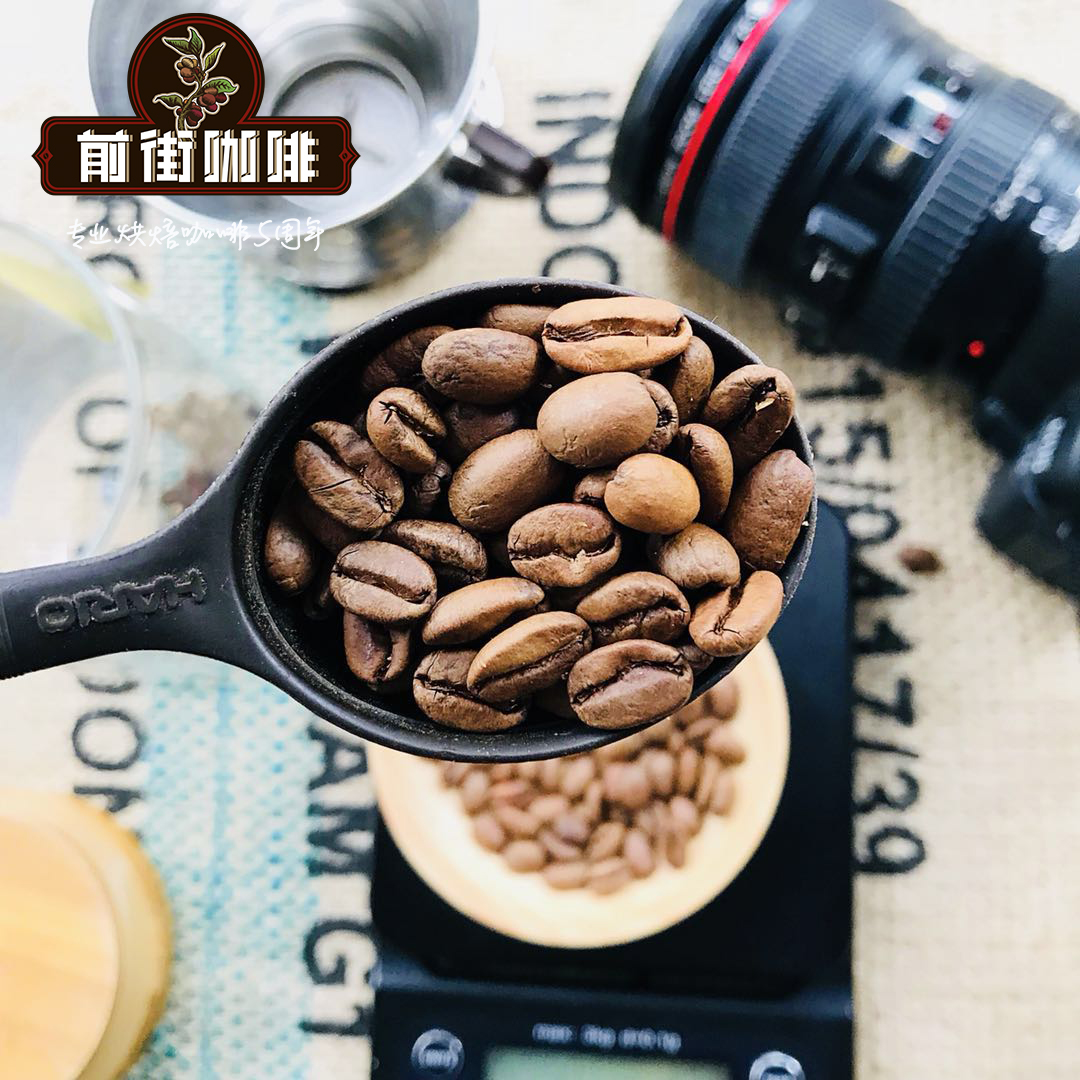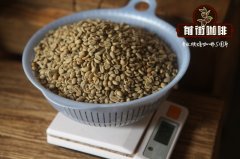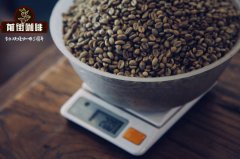Hawaii Kau Experimental treatment of Fine Coffee introduction what are the advantages of Ka' coffee over Kona

Have you ever tried the specialty coffee of Ka' coffee? This area of Hawaii has been growing coffee only for 20 years and soon became famous.
Since 2007, Ka' coffee has played a high role in international open cup competitions run by SCA and Roaster's Guild. This year, Ka`u Specialty,LLC will provide some footage on SCA for the Hawaiian Coffee Association booth (Saturday 1 pm,#2707 30 pm,#2707 stall) and pour in some of the best coffee in the region.
So, before SCA, we talked to Malian Lahey of Ka' specialty coffee. She tells us what makes Ka' coffee stand out from other regions, what tasting notes you can get from typical Ka' coffee, and how three different experimental processes are used in the region.
What's so different about KA' kids?
Ka' beach is the southernmost tip of the island of Hawaii, between Kona and Pune. It contains most of the Hawaiian Volcanoes National Park, making the region's nutritious volcanic soil ideal for crops such as coffee.
It also has plenty of rain, and most farms are located at an altitude of 1500mur2100 feet. The weather tends to be cooler, allowing the coffee to mature and produce more sugar.
Marjan told me: "the Ka' volcano is deep, the soil is soft, and the climate is cool." Beans ripen more slowly. She realized the importance of quality soil and the importance of sustainable farming to protect the soil. She studied soil microbiology, Dave Dave Jacke's courses in sustainable farming, Korean natural agriculture and biodynamics with Dr. Elaine Ingham.
With this excellent coffee culture, you might expect to have a long history of growing coffee in Drogo. But in fact this is a new industry. The crop was first sown in 1997. Today, the region has 50 farmers with an annual output of 180000 kilograms. Malian people work with 20 of them.
Although the agriculture here is still young, the region has been producing high-quality coffee. Marjan told me that Ka'u makes a variety of cups, but usually you want to taste "fresh tropical and crisp citrus flavors [which perfectly complement the sweetness of honey and caramel".
Moreover, innovative new processing methods have been rapidly adopted in the region.
Experimental treatment method
After picking ripe coffee cherries, the pulp needs to be removed from the seeds: this step is called coffee processing. Typical methods include natural / dry treatment, washing treatment and honey treatment.
However, Mali has been committed to innovative coffee processing methods in order to further improve the best flavor of coffee. These include carbon impregnation, freezing and the innovative use of mineral water in the washing process-methods that are new not only for Ka' waters, but also for the entire state of Hawaii.
She told me that these processes are increasingly leading to better cup contours (which will be shown on SCA). What's that
1. Carbon impregnation:
In 2015, Sasa Sestic won the world barista championship for carbon-impregnated coffee, a technology he borrowed from the wine industry. He has been working with Marian to help her use exactly the same technology.
The idea of carbon impregnation is to clean the coffee under stable conditions so that microbes can be controlled. Marjan explained that they processed coffee in stainless steel containers. "seal the container and fill the water tank with carbon dioxide."
As for its effect on the final cup, Sasa told me that "complexity has improved [for] acidity and flavor".
two。 Freezing process:
Google's "Frozen Coffee", you will debate the best way to store and roast coffee. But this proprietary technology is very different: it involves freezing coffee for a period of time during processing.
Marjan told me that doing so has proved to be the key to developing caffeine and complexity.
3. Mineral water:
Do you want to make some coffee? Use a lot of water. And Marjan thinks the same is true of processed coffee. The processing process after washing consumes a lot of water, and she told me that mineral water can improve the flavor.
The Ka' specialty uses water from the Ka' Forest Reserve, which is located on the slopes of the Mauna Loa volcano.
Marjan told me that she wants Ka' coach to be a leader in quality, innovation and sustainability. By working with small farmers and industry leaders, she told me that they were getting quality coffee, reasonable living wages and restorative agriculture-and she was proud to be involved.
In just 20 years, the region has begun to produce premium coffee-Ka' coffee Specialty is using unique processing methods to further enhance these coffees. We look forward to seeing the continued development of coffee production in the region.
Would you like to taste Ka' coffee yourself? To the SCA Global Coffee Fair? Keep in mind that Ka' coffee specialty coffee will be at the booth of the Hawaiian Coffee Association, where they will pour washed carbon impregnated coffee and photograph the award-winning washed Ka' coffee. Show up at booth 2707 at pm between 1:30 and 2:30 on Saturday to make you think for yourself about the potential of Ka' kids.
Important Notice :
前街咖啡 FrontStreet Coffee has moved to new addredd:
FrontStreet Coffee Address: 315,Donghua East Road,GuangZhou
Tel:020 38364473
- Prev

Introduction of Laos New Wet processed Coffee do Laos's boutique Coffee have any potential compared with Yunnan
If you have ever tried boutique coffee from Laos, you are lucky. However, in this Southeast Asian country, the production level of high-quality products is constantly improving. Let me show you how the coffee industry here has changed and why try Lao boutique coffee next time you have a chance. Laos is a mountainous country inhabited by 6.7 million people. According to FAO, about 80% is self-sufficient.
- Next

Is Mojiana in Brazil a boutique coffee producing area? Huagu Manor what is the flavor of PB beans in the new century?
Brazil Mojiana Flower Valley Manor New Century PB Round Bean country: Brazil production area: Morgiana altitude: about 1100-1250 m treatment: sun varieties: Catuai, Icatu, Mundo Novo Brazil's more famous producing areas include Mogiana, Cerrado, Sul de Minas, Sao Paulo and so on. Mogiana is located in southeastern Brazil, near the port of Rio de Janeiro (Rio) and Sao Paulo
Related
- Detailed explanation of Jadeite planting Land in Panamanian Jadeite Manor introduction to the grading system of Jadeite competitive bidding, Red bid, Green bid and Rose Summer
- Story of Coffee planting in Brenka region of Costa Rica Stonehenge Manor anaerobic heavy honey treatment of flavor mouth
- What's on the barrel of Blue Mountain Coffee beans?
- Can American coffee also pull flowers? How to use hot American style to pull out a good-looking pattern?
- Can you make a cold extract with coffee beans? What is the right proportion for cold-extracted coffee formula?
- Indonesian PWN Gold Mandrine Coffee Origin Features Flavor How to Chong? Mandolin coffee is American.
- A brief introduction to the flavor characteristics of Brazilian yellow bourbon coffee beans
- What is the effect of different water quality on the flavor of cold-extracted coffee? What kind of water is best for brewing coffee?
- Why do you think of Rose Summer whenever you mention Panamanian coffee?
- Introduction to the characteristics of authentic blue mountain coffee bean producing areas? What is the CIB Coffee Authority in Jamaica?

